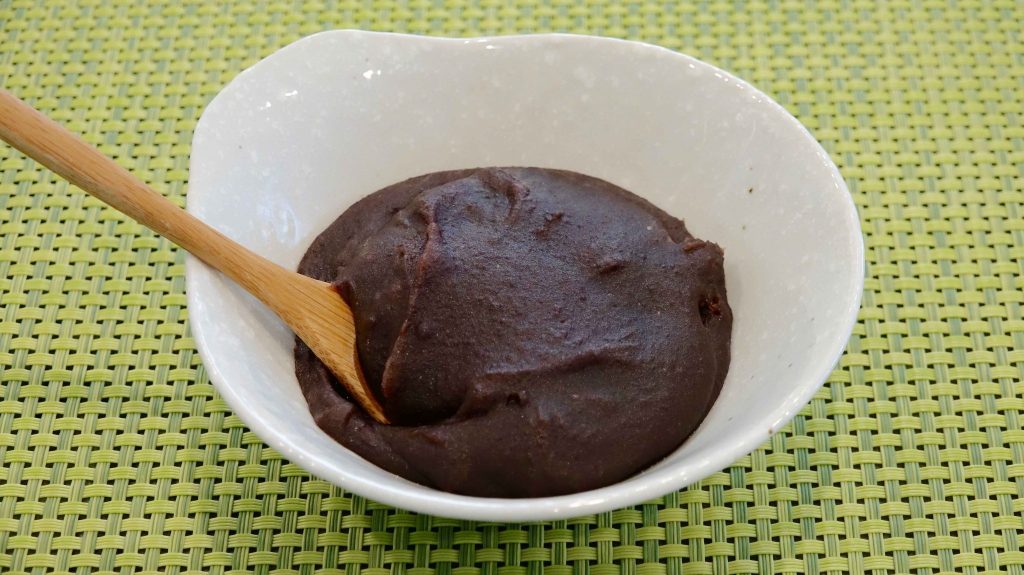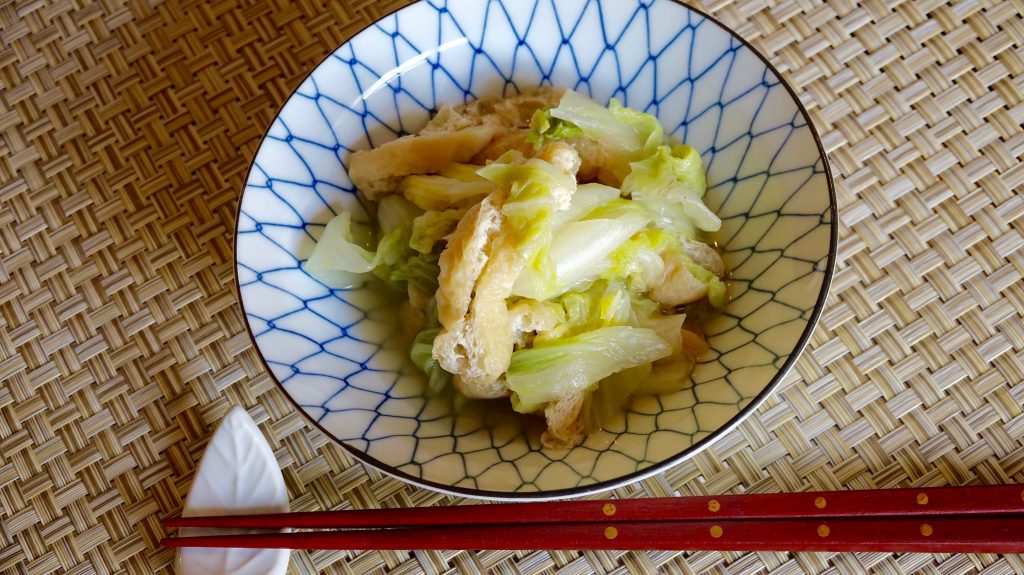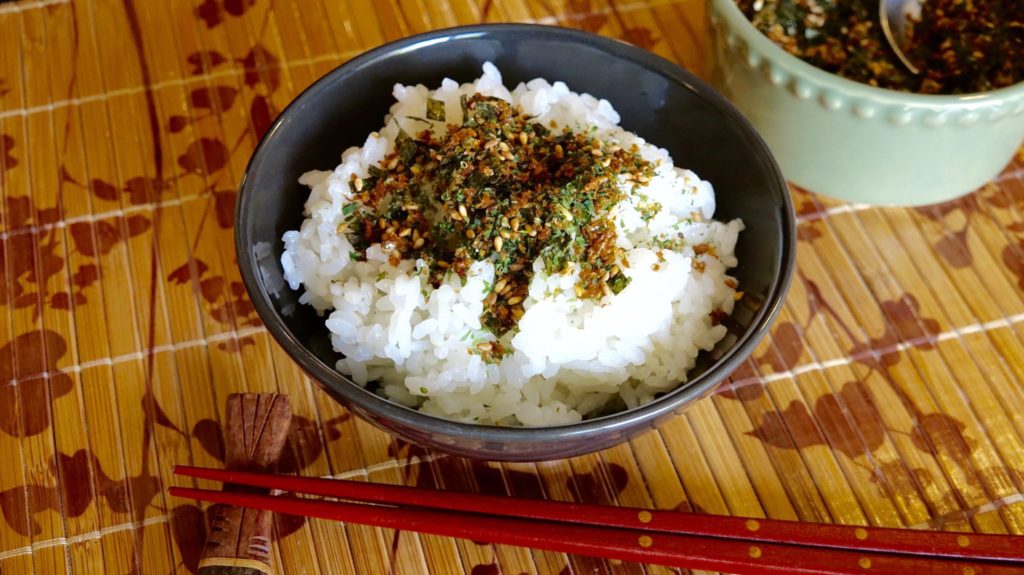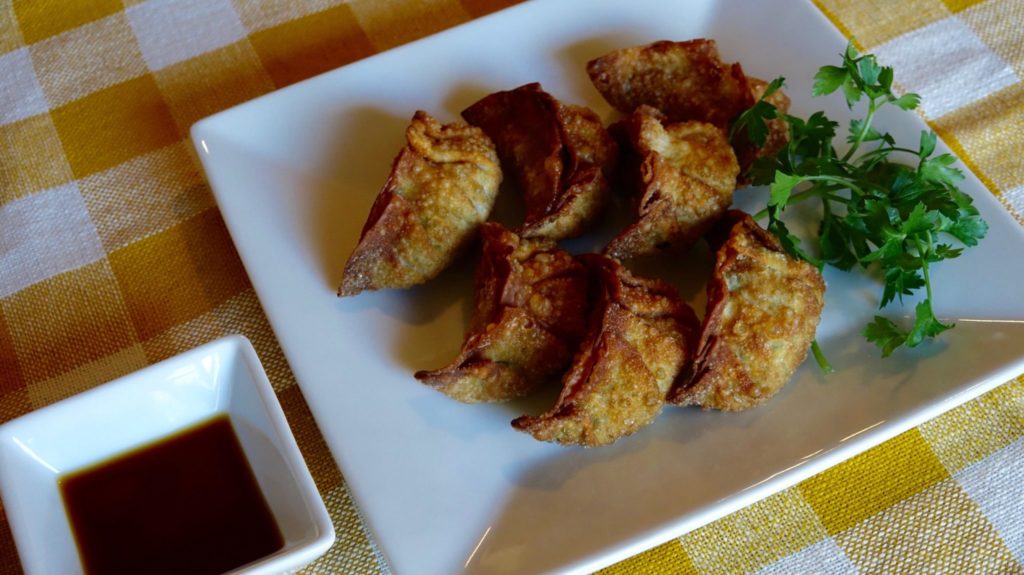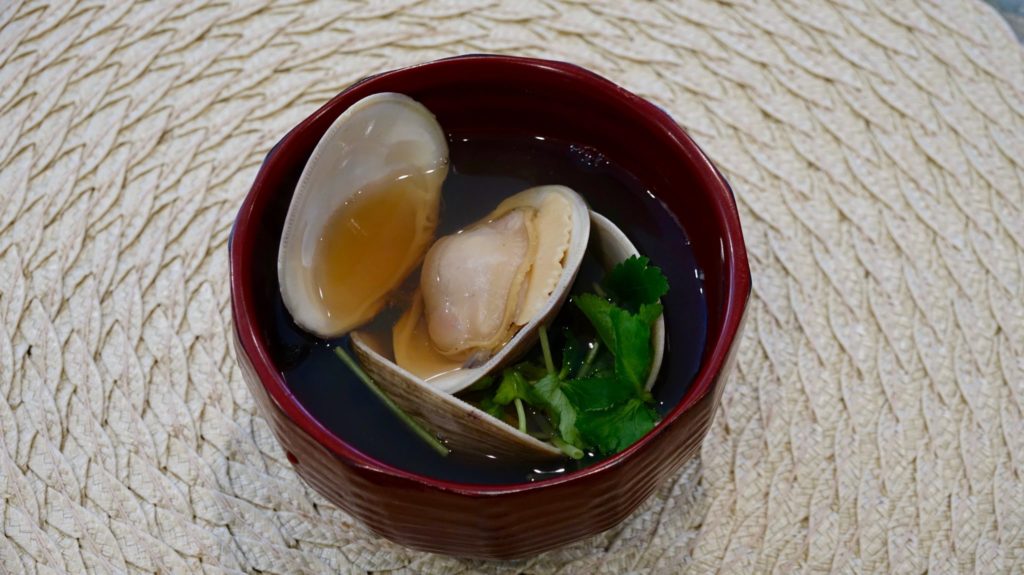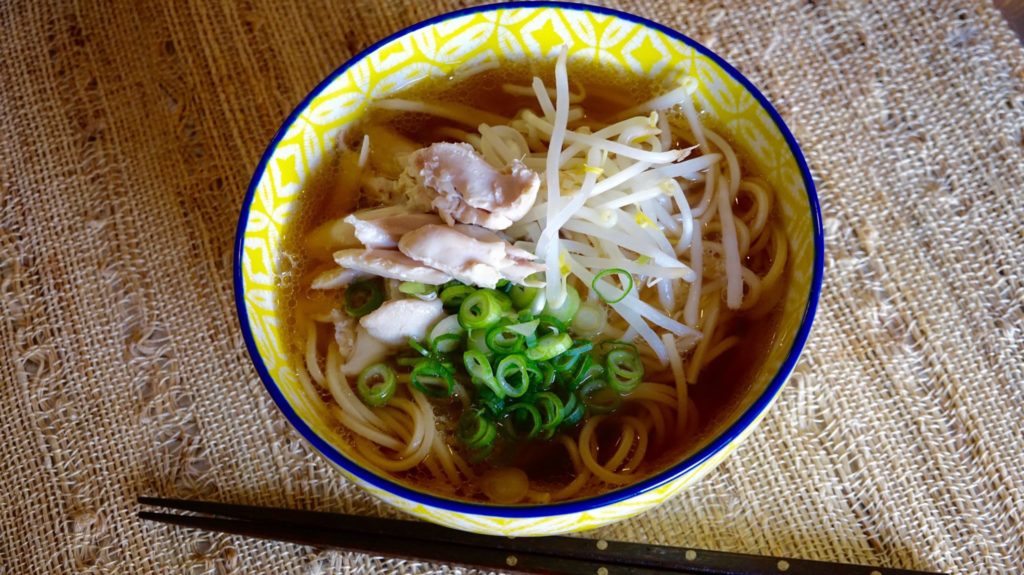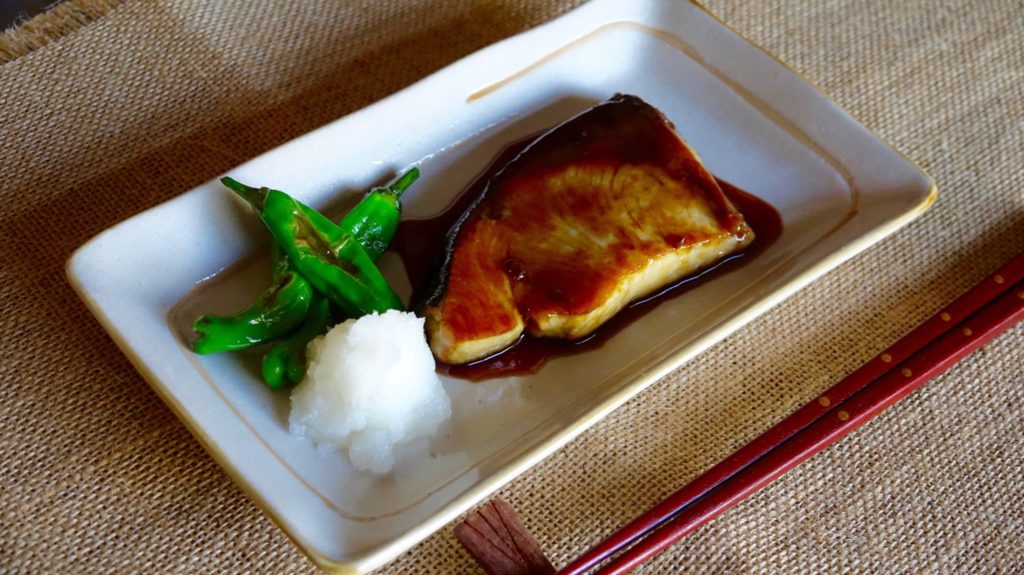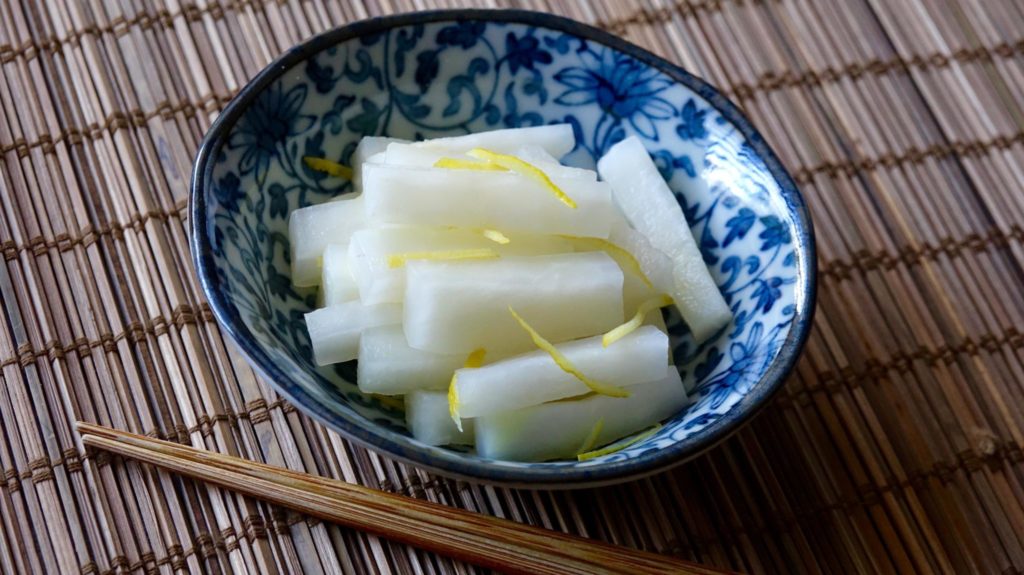Koshian (or koshi-an) is a kind of sweet red bean paste (Anko) used in a lot of Japanese sweets. While Tsubuan Anko is bean paste containing whole beans, Koshian is a strained and smooth paste. Koshian is used in many traditional Japanese desserts which have a more sophisticated feel. It tastes a little less sweet than Tsubuan Anko, and it may be easier for people who don’t like that sweet of an Anko flavor.
Hakusai (Nappa or Napa Cabbage) Nibitashi is a very typical home-made Japanese side dish. It is light, healthy, and subtly flavored, and can go with any entree and steamed rice. You don’t see this traditional small dish very often at Japanese restaurants in the US, but it is a perfect vegetable side dish for everyday dinners.
Furikake are rice toppings which are made of dried seafood and seasonings. Furikake is not typically made at home as a side dish, but is more often prepackaged products you buy at supermarkets and other stores in Japan. However, if you don’t have access to shops that sell Furikake, it is easily made at home too. There are many kinds of Furikake out there, but we will show you a very basic one with Nori and Katsuo (dried seaweeds and bonito flakes) here.
Gyoza is dumplings, usually ground pork or chicken and vegetables wrapped in round (fresh pasta like) flour skins and pan-fried. Gyoza is originally from Chinese fried dumplings, but it is so popular and rooted well in Japanese cuisine today. Most of the time, Japanese Gyoza is pan fried (with some steaming action in the middle), however, here we deep-fry to make them crispy outside and juicy inside.
Ushiojiru is a simple clear soup with Hamaguri (hard clams). It is often eaten on the girls’ festival in Japan on March 3rd. Umami, savory flavor, from the shellfish is so rich and deep that the seasoning for this soup is very minimal. The fresh green taste of Mitsuba leaves is a nice — and only — accent for this soup.
Ramen is a very popular noodle soup in Japan. Ramen noodles are originally Chinese style noodles, but they have changed and evolved to become a favorite Japanese food over many years. There are millions of Ramen restaurants in Japan, from old neighborhood Chinese restaurants, to Ramen street carts open late at night, to slick and modern Ramen specialty shops in cities. Those Ramen cooks all work so hard researching and testing to develop their very own original flavors for the noodles and soups of Ramen. Because there are a lot of Ramen restaurants out there, the competition among them to be popular or even to survive is brutal. But once they win the battle, customers won’t mind waiting for hours for their Ramen.
Okonomiyaki is a cabbage pancake covered with savory Okonomiyaki sauce. Okonomiyaki sauce is a Worcester-based sauce with some sweetener, similar to Tonkatsu Sauce, and it is the crucial flavor of this dish. Okonomiyaki with pork is the one of the most popular kinds, but Squid is also a staple item on the menu at Okonomiyaki restaurants in Japan. We recommend using raw squid because it will give the batter more flavor, but any squid you can find, such as calamari (not breaded), is fine.
Buri Teriyaki is Yellowtail fish cooked and coated with Teriyaki Sauce. Although a lot of people may think of Teriyaki mainly with chicken, fish Teriyaki may be eaten more often in Japan.
Teriyaki means “grilled with a shine,” and it is an important cooking technique for meat and fish. Sugar in teriyaki sauce gives a shine to food which makes it not only tasty, but also look more appetizing. Japanese Teriyaki sauce is not as sweet as some Teriyaki dishes from restaurants here. If you’re used to the taste of that and like it, adjust the amount of sugar and Mirin.
Yuzu Daikon is pickled Daikon radish with Yuzu citrus. This sweet and sour pickle dish has the refreshing taste of Yuzu citrus and a crunchy texture you will enjoy. Yuzu Daikon may be quite easy to make for Japanese Tsukemono (pickled vegetables), but it is very tasty. It is also good in the fridge up to a week to 10 days, so it comes in handy when you need just a little something for a meal
Shippoku Soba is hot soba noodle dish with various toppings. It is often on the menu at Soba noodle restaurants in Japan, but not seen as much at Japanese restaurants in the US, since it is a more regional Japanese food. Shippoku Soba can be eaten at any time of the year, but you can try it as Toshikoshi Soba which is the famous noodle dish for the end of the year in Japan.
